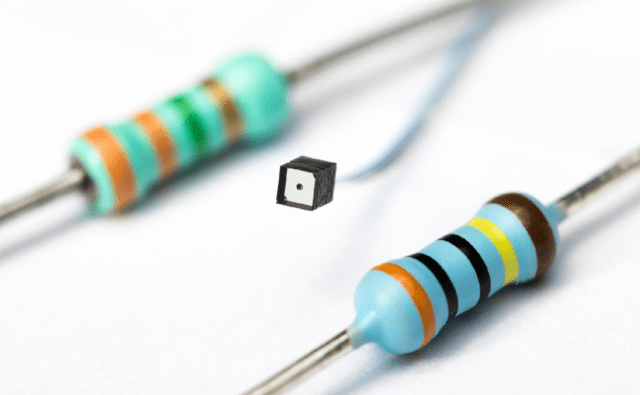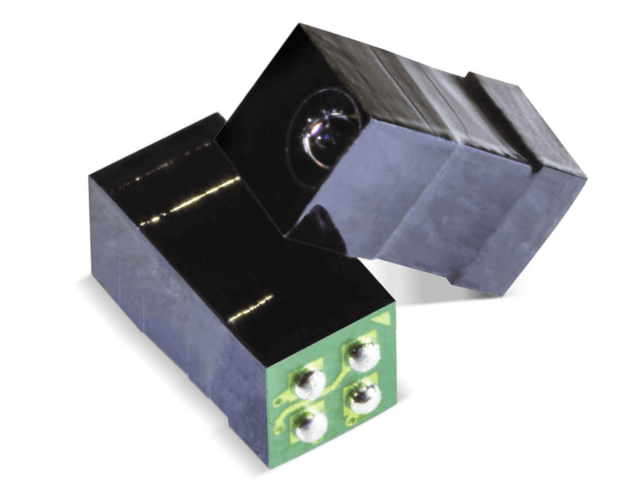AMS (Austria Mikro Systeme) known for their array for micro sensing solutions and most importantly the NanEye, a Miniature CMOS image sensor which is designed for applications where size is a critical factor has also launched a set for evaluation kits called the NanoVision and the NanoBerry for the development of solution based on the AMS NanEyeC miniature image sensor.
NanEyeC Camera Sensor
The NanEyeC comes in a footprint of just 1mm x 1mm surface mount, and it can produce 100kpixel resolution up to 58 frames/s. It seems the NanEyeC is based on the NanEye series, which typical (NanEye) features a 249×250 resolution with a high sensitive 3um x 3um rolling shutter pixel and capable of a high frame rate of about 43fps to 62fps. The NanEyeC sensor is based on the high-speed LVDS data interface.

The sensor is assembled with a unique lens and cover glass, which fits in an endoscope with a diameter of <1.1mm. LVDS interfaces ensure it can drive signals over a cable length of up to 3m. The sensor can communicate over a single bi-directional serial interface.
AMS is targeting the NanEyeC to a wide range of markets. For example, it is expected the NanEyeC will easily find applications in eye tracking for augmented/virtual reality headsets, applied in presence detection and monitoring, robotics, especially those tiny robots, home security, and anything that requires stealth detection.
In facilitating the development of the NanEyeC applications, AMS has recently announced the NanoVision and NanoBerry evaluation kits, which provide a ready-made platform for the development of the sensor.
NanoVision Demo Kit
Although little information is provided at this time, the NanoVision demo kit is based on the Arduino development platform, which raises the possibility of compatibility with the Arduino ecosystem. The kit includes all necessary drivers to interface the sensor’s Single-Ended Interface Mode (SEIM) output to an Arm Cortex-M7 microcontroller.
Different image processing functions are expected to be possible like white-color balancing, color reconstruction, background subtraction, which can be used for presence detection and others. The NanoVision is targeted to engineers to help them in accelerating the development of low frame-rate applications.

NanoBerry Evaluation Kit
The NanoBerry Evaluation kit is designed as a typical Raspberry Pi HAT board. It includes a NanEyeC image sensor built into an add-on board that can be attached to the Raspberry Pi. The kit consists of firmware for interfacing with the Raspberry.
The NanoBerry board is expected to be compatible with any of the Raspberry Pi Arm Cortex-A53-based processor boards, which include the Raspberry Pi 2, and 3 series but not sure of the Raspberry Pi 4 which uses the Arm Cortex-A72 processor.
Unlike the NanoVision, the NanoBerry is targeted to applications demanding higher frame rates such as object detection, object tracking, and computer vision functions provided by the OpenCV library.
The NanoVision board is available now to customers on request, while the NanoBerry kit is expected to be available to customers from Q1 2020. More information about the kits is available on the announcement page and the product page.

I enjoy writing about the latest news in the areas of embedded systems with a special focus on AI on edge, fog computing, and IoT. When not writing, I am working on some cool embedded projects or data science projects. Got a tip, freebies, launch, idea, gig, bear, hackathon (I love those), or leak? Contact me.
Support CNX Software! Donate via cryptocurrencies, become a Patron on Patreon, or purchase goods on Amazon or Aliexpress




